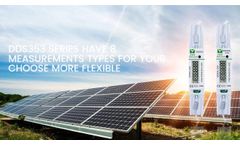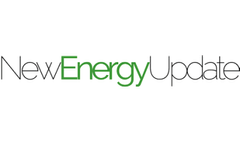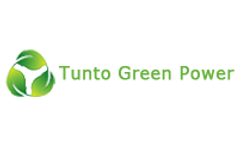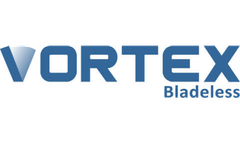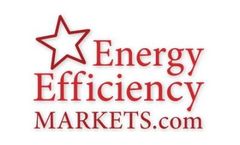Wind Power Impact On Power Systems Articles & Analysis
35 articles found
An export electricity meter is a device used to measure and record the output energy in a power system, usually used in solar power generation systems, wind power generation systems or other renewable energy generation systems. With the vigorous development of new energy power generation, distributed generation is integrated into household electricity, and export electricity meters have been ...
But firm renewables enable us to deal with the intermittency of solutions like wind and solar by bolstering existing energy supply. They’re similar to energy storage systems, which are often touted as a solution to intermittent renewables because they capture excess energy for use at a later date, in that they both reduce imbalances between energy demand ...
Introducing the next generation of SimpliPhi Power’s industry-leading safe lithium ferro phosphate (LFP) battery – the PHI 3.8-M – now available in our sleek but tough signature white metal design. Instantly recognizable by the rugged, powder-coated steel housing, our updated PHI 3.8-M kilowatt-hour (kWh) battery is more durable, efficient, and capable of withstanding the ...
Equinor will use new installation techniques, concrete substructures and a shared mooring design to slice costs at its ground-breaking Hywind Tampen floating wind project in Norway, Halvor Hoen Hersleth, Operations Manager at Hywind Tampen, told the Offshore and Floating Wind Europe 2019 conference. Hywind Tampen, the world's first floating wind farm to supply oil and gas facilities, is set ...
1.Introduction Living off the grid brings memories of a cabin deep in the woods or a hut in the mountains. But in essence, off grid solar system is basically home solar systems providing electricity to private premises and not necessarily in connection with the public grid. Living off the grid is a state of autonomy. It is a way to avoid all the complications that come with sharing electricity ...
In Spain, however, one business is looking to design wind generators that produce renewable energy without blades. "Our goal is to develop a new wind generator that minimize(s) the amount of mechanical elements to reduce the maintenance costs and… environmental impact," David Yanez, co-founder of Spanish business Vortex Bladeless, told ...
This paper presents the development and qualitative validation of a doubly-fed induction generator (DFIG) wind turbine model that is represented in terms of behaviour equations of each of the subsystems, mainly the turbine rotor, the drive train, the induction generator, the power converters and associated control systems and a protection system. Simulation results obtained from the models are ...
In this paper, data–driven system modelling, control, and fault detection technique for wind turbine systems are researched. The developed algorithm is to recursively update system parameters using predictor–based system identification (SID) technique. Updated system parameters are used to design subspace predictive controller for wind turbine systems with constraint on pitch angle and generator ...
The impact of the wind generation on the power systems is no longer negligible if high penetration levels are going to be achieved. ...
The efficiency of the wind power conversions systems can be greatly improved using an appropriate control algorithm. In this work, a robust control for variable speed wind power generation that incorporates a doubly feed induction generator is described. The electrical systems incorporate a wound rotor induction machine with back–to–back three phase power converter bridges between its rotor and ...
This paper presents a voltage and frequency controller with neutral current compensation in a stand alone wind energy conversion system (WECS) employing an asynchronous generator. The proposed controller consists of a three leg insulated gate bipolar junction transistor (IGBT)–based voltage source converter and a battery energy storage system (BESS) at its DC bus. The neutral terminal for the ...
In this study, the solar radiation and wind data pertaining to Bigadic region are analyzed to assess the performance of a hybrid Photovoltaic–Wind–Diesel–Battery energy system. The average energy consumption of the system is about 20.33 kWh per day and 600 kWh per month, with a peak power demand of 2.4 kW. A 10 kW Wind Turbine and a 1 kWp PV energy system with 48 kW battery are installed. The ...
In this study, the solar radiation and wind data pertaining to Bigadic region are analyzed to assess the performance of a hybrid Photovoltaic-Wind-Diesel-Battery energy system. The average energy consumption of the system is about 20.33 kWh per day and 600 kWh per month, with a peak power demand of 2.4 kW. A 10 kW Wind Turbine and a 1 kWp PV energy system with 48 kW battery are installed. The ...
In this paper, a new robust controller has been proposed for attaining the maximum safe instantaneous wind penetration. Particle swarm optimisation (PSO)-based algorithm has been developed to obtain the maximum safe instantaneous penetration by the optimisation of grid parameters. The developed algorithm has been tested on modified IEEE 14-bus system. The effectiveness of the proposed methodology ...
This paper analyses the development of wind power in The Netherlands and Denmark in the period 1973-2000 with the cyclic innovation model (CIM). CIM regards innovation as a cyclic process in which different actors constantly develop and exchange knowledge through four different types of cycles: hard science cycle, soft science cycle, integrated engineering cycle, and differentiated valorisation ...
This paper investigates the operation and control of multiple Distributed Generation (DG) systems interconnected to the utility in the form of microgrid. The developed model of the microgrid consists of microturbine generation system, converter-based DG system with stiff DC source, synchronous-generator-based DG system and wind power system with induction generator. The Simulation model of the ...
This paper presents a novel usage of 6/3-phase dual stator-winding induction generator (DWIG) with a static excitation power controller (SEC) as a wind power generator. This generator is composed of a standard squirrel-cage rotor and two sets of winding housed in the stator slots. One is referred to as the 6-phase power winding, and the other is defined as the 3-phase control winding. On the ...
The United States has been generous with tax credits for energy production. But until now, it’s been somewhat miserly about giving breaks to those who make the equipment that makes the energy – or saves it.That’s changed with creation of the Advanced Energy Manufacturing Credit (MTC), part of the federal stimulus package. The 30% tax credit makes $2.3 billion available for new, expanded, or ...
In this paper, a methodology for sizing of hybrid photovoltaic-wind power generation (HPVWPG) system is described. The purpose of this methodology is to predict the PV-generator area, the capacity of the battery and the capacity of the wind generator in isolated (remote) areas, where the meteorological data (solar irradiation, air temperature, wind speed, etc) are not always available. For this ...
Currently, wind power faces heterogeneous conditions for market integration throughout Europe, given both differing wind power and power system characteristics as well as according regulatory frameworks. This paper discusses marketing options and assesses the influence of market rules on the economic value of wind power for an Austrian case study. Special emphasis is thereby put on options for ...

